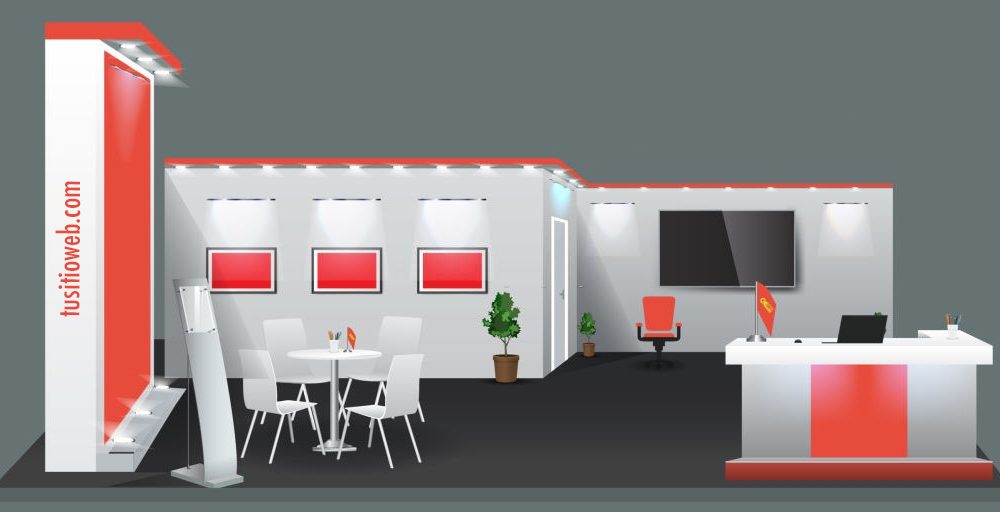


La participación en una feria es una estrategia de marketing que puede llegar a ofrecer numerosos beneficios a la empresa. Sin embargo, formar parte de una feria supone una importancia en recursos, por lo que es de vital importancia tener una organización previa y bien estructurada.
Una de las acciones principales que tenemos que llevar a cabo es saber que queremos conseguir con la realización del evento: ¿queremos educar a la comunidad?, ¿queremos persuadir a potenciales clientes contribuyentes con el fin de obtener fondos? o ¿queremos dar a conocer nuestro producto para captar clientes potenciales?
Sea cuál sea nuestro objetivo, tenemos que limitarlo lo más posible para poder llegar al tipo de cliente que más nos interese.
Tenemos que determinar que es exactamente lo que queremos lograr. Establecer que esperamos de todo el evento, a cuántas personas hemos o vamos a llegar, cuánta recaudación hemos conseguido, cuántos nuevos miembros se han inscrito a nuestra web o negocio, si hemos logrado dar el mensaje que pretendíamos dar.
Será muy importante poder cuantificar nuestras metas, es decir, que sea tangible para poder detectar si hemos conseguido o no los objetivos, y en que cantidad se ha producido dicho valor.
Además de presentar un “look” adecuado y un diseño atractivo para el usuario, el stand debe ser accesible. Ofrecer diferentes tipos de transmitir la información para atraer a diversos tipos de clientes. A mucha gente le gustan los folletos y los materiales de lectura, mientras que otros asistentes se sentirán atraídos por los formatos digitales.
Asegúrate de destacar las ofertas más especiales para que los usuarios sepan que tienen que comprar en la feria para recibir un gran descuento. Esta ventaja además de estar expuesta, debe ser muy clara, de tal forma que no surja la duda ni de su cuantía ni a quien aplica.
Desarrollar un plan de marketing en las redes sociales para promocionar el evento. Una forma de interactuar es ofreciéndoles visitar el stand y ofrecerles un incentivo especial a través de las redes sociales
Existen ciertos elementos que son imprescindibles y deberían estar siempre presentes en cualquier stand:
Estructura. La estructura sirve para delimitar el espacio de actuación. Lo ideal es que los elementos separadores utilizados para marcar el espacio vayan en línea con los colores corporativos de la empresa y de la marca.
Iluminación. Hay que realizar una buena selección de lámparas o de leds. Lo más importante es que la zona de reuniones tenga una iluminación con poca intensidad para dar un ambiente más íntimo y favorecer la fluidez de las conversaciones con los posibles clientes.
Audiovisual. Se pueden usar proyectores o pantallas a medida que sean visibles desde los pasillos y que atraigan la atención de los clientes y que se dirijan a nuestro stand.
Elementos gráficos. Darán una buena impresión al cliente. Para ello deberán ir en línea con la imagen de la empresa.
Mostrador. Se deberá colocar el mostrador de manera estratégica. Colocarlo en el interior del stand hará que las personas pasen tiempo en el stand y así entablar más conversaciones con ellos para poder darles a conocer los productos o servicios.

Como puedes comprobar, la participación de una feria requiere de un trabajo muy laborioso para preparar el stand. Necesitas realizar un trabajo previo de preparación, de ejecución y de análisis una vez finalizado la feria.
Si quieres contar con un equipo especializado que te ayude y asesore en la participación de una feria, ponte en contacto con especialistas de ferias y stands para que lleven a cabo tu idea.
We firmly believe that the internet should be available and accessible to anyone, and are committed to providing a website that is accessible to the widest possible audience, regardless of circumstance and ability.
To fulfill this, we aim to adhere as strictly as possible to the World Wide Web Consortium’s (W3C) Web Content Accessibility Guidelines 2.1 (WCAG 2.1) at the AA level. These guidelines explain how to make web content accessible to people with a wide array of disabilities. Complying with those guidelines helps us ensure that the website is accessible to all people: blind people, people with motor impairments, visual impairment, cognitive disabilities, and more.
This website utilizes various technologies that are meant to make it as accessible as possible at all times. We utilize an accessibility interface that allows persons with specific disabilities to adjust the website’s UI (user interface) and design it to their personal needs.
Additionally, the website utilizes an AI-based application that runs in the background and optimizes its accessibility level constantly. This application remediates the website’s HTML, adapts Its functionality and behavior for screen-readers used by the blind users, and for keyboard functions used by individuals with motor impairments.
If you’ve found a malfunction or have ideas for improvement, we’ll be happy to hear from you. You can reach out to the website’s operators by using the following email
Our website implements the ARIA attributes (Accessible Rich Internet Applications) technique, alongside various different behavioral changes, to ensure blind users visiting with screen-readers are able to read, comprehend, and enjoy the website’s functions. As soon as a user with a screen-reader enters your site, they immediately receive a prompt to enter the Screen-Reader Profile so they can browse and operate your site effectively. Here’s how our website covers some of the most important screen-reader requirements, alongside console screenshots of code examples:
Screen-reader optimization: we run a background process that learns the website’s components from top to bottom, to ensure ongoing compliance even when updating the website. In this process, we provide screen-readers with meaningful data using the ARIA set of attributes. For example, we provide accurate form labels; descriptions for actionable icons (social media icons, search icons, cart icons, etc.); validation guidance for form inputs; element roles such as buttons, menus, modal dialogues (popups), and others. Additionally, the background process scans all of the website’s images and provides an accurate and meaningful image-object-recognition-based description as an ALT (alternate text) tag for images that are not described. It will also extract texts that are embedded within the image, using an OCR (optical character recognition) technology. To turn on screen-reader adjustments at any time, users need only to press the Alt+1 keyboard combination. Screen-reader users also get automatic announcements to turn the Screen-reader mode on as soon as they enter the website.
These adjustments are compatible with all popular screen readers, including JAWS and NVDA.
Keyboard navigation optimization: The background process also adjusts the website’s HTML, and adds various behaviors using JavaScript code to make the website operable by the keyboard. This includes the ability to navigate the website using the Tab and Shift+Tab keys, operate dropdowns with the arrow keys, close them with Esc, trigger buttons and links using the Enter key, navigate between radio and checkbox elements using the arrow keys, and fill them in with the Spacebar or Enter key.Additionally, keyboard users will find quick-navigation and content-skip menus, available at any time by clicking Alt+1, or as the first elements of the site while navigating with the keyboard. The background process also handles triggered popups by moving the keyboard focus towards them as soon as they appear, and not allow the focus drift outside of it.
Users can also use shortcuts such as “M” (menus), “H” (headings), “F” (forms), “B” (buttons), and “G” (graphics) to jump to specific elements.
We aim to support the widest array of browsers and assistive technologies as possible, so our users can choose the best fitting tools for them, with as few limitations as possible. Therefore, we have worked very hard to be able to support all major systems that comprise over 95% of the user market share including Google Chrome, Mozilla Firefox, Apple Safari, Opera and Microsoft Edge, JAWS and NVDA (screen readers), both for Windows and for MAC users.
Despite our very best efforts to allow anybody to adjust the website to their needs, there may still be pages or sections that are not fully accessible, are in the process of becoming accessible, or are lacking an adequate technological solution to make them accessible. Still, we are continually improving our accessibility, adding, updating and improving its options and features, and developing and adopting new technologies. All this is meant to reach the optimal level of accessibility, following technological advancements. For any assistance, please reach out to